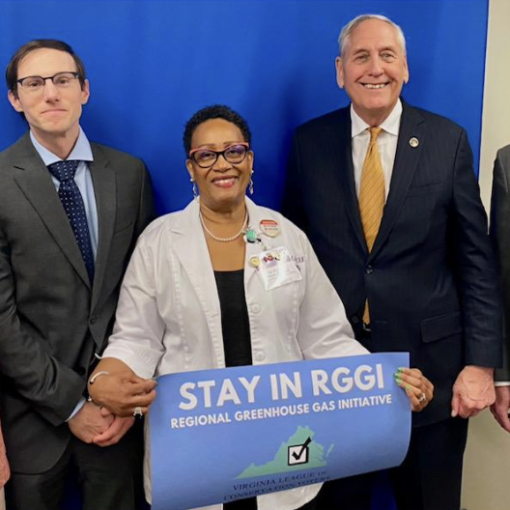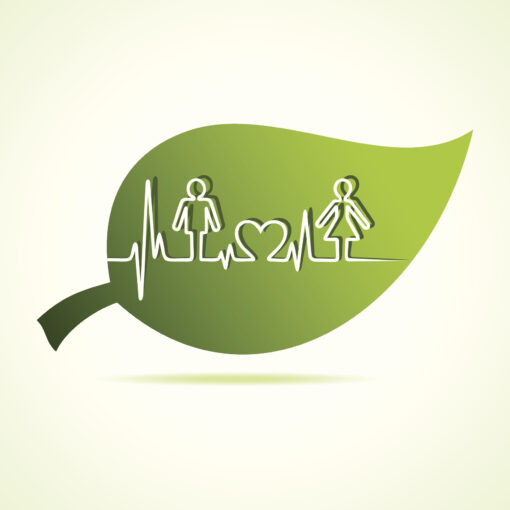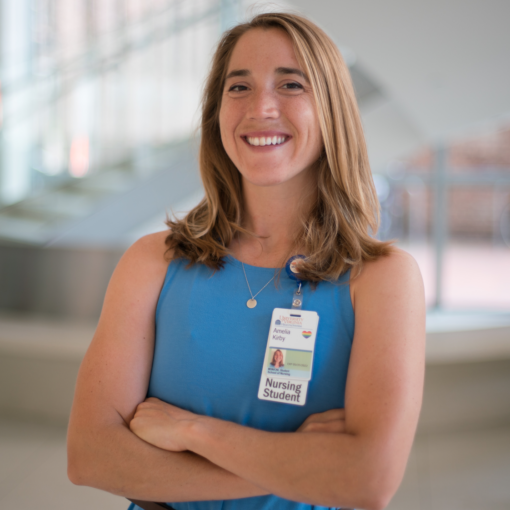“I Thought It Was Just About Heat”: Using the Community as Partner Model to Support Climate Change Education Among Undergraduate Nursing Students
 Numerous studies have concluded that climate change is a significant threat to human health across the life span. As such, nurses can play a critical role in assisting our communities to mitigate, adapt and be resilient to climate change. This article will describe an innovative nursing undergraduate teaching strategy using the Community as Partner Model to prepare nursing students to work to address the climate change crisis and it impact on human health across the life span.
Numerous studies have concluded that climate change is a significant threat to human health across the life span. As such, nurses can play a critical role in assisting our communities to mitigate, adapt and be resilient to climate change. This article will describe an innovative nursing undergraduate teaching strategy using the Community as Partner Model to prepare nursing students to work to address the climate change crisis and it impact on human health across the life span.
UT Health San Antonio School of Nursing requires both traditional and accelerated undergraduate nursing students to take a course and clinical called Population Health: Theoretical and Clinical Foundations. The course addresses population focused health promotion, and disease and injury prevention based on determinants of local, national and global health including lifestyle, environmental, cultural, and genetic factors. The theory and clinical classes use Anderson and McFarlane’s Community as Partner Model (CAP) as an organizing framework to the design of the class. Based on Neuman’s model of a total-person approach to viewing patient problems, the CAP model was developed to illustrate the definition of public health nursing as the synthesis of public health and nursing by defining the four concepts central to nursing: person, environment, health and nursing. Nursing is viewed from the lens of prevention, all of nursing is considered preventive, using module variables, aimed at reducing possible encounters with stressors or strengthening the lines of defense.
The theory course includes modules on environmental health. Because the health impacts of climate change is a condition that is detrimental to human health, a module called Climate Change as a Public Health Issue was developed that highlights the following: 1) climate change 101; 2) consequences of climate change (intense heat, droughts, intense weather events, vector-borne diseases, etc; 3) the health impacts of each of those consequences, particularly for the most vulnerable communities, and 4) adaptation and mitigation. An assignment has been developed that gives students an opportunity to reflect not only on what they have learned, but also how the CAP, with its focus on all three levels of prevention, can be applied to adaptation and mitigation climate change strategies.
The instructions given were for students to view a video on the Alliance of Nurses for Healthy Environments (ANHE) website called Climate Change and Nursing https://www.youtube.com/watch?v=k6rhk-MlYxs. In addition, they are asked to read Moving Forward: A Guide for Health Professionals to Build Momentum on Climate Action http://climateforhealth.org/wpcontent/uploads/2020/06/CFHMFG-web.pdf.
Students are then asked to answer the following questions:
- Describe how the stressor of intense heat would impact 4 of the 8 subsystems described in the CAP model. With each subsystem identified, identify a flexible line of defense that could be put in place to reduce the impact of the stressor on the core.
- Please see the following list of consequences from climate change. Describe at least one health issue and the reason why it can be attributed to the consequences of climate change. Then, list two overall ways that climate change contributes to existing health disparities.
- Please describe two things learned about climate change that you did not know previous to viewing this assignment.
Results
This past year, a total of 43 accelerated undergraduate students completed the assignment.
The students’ responses to how strategies can be used to impact the stressor of intense heat were quite creative in many ways and reflected their understanding of the important role of all three levels of prevention as adaptation and mitigation climate change strategies. Certainly, cooling centers were mentioned, but many students liked the idea of taking it mobile-mobile cooling centers; investment in distributing handheld, battery-operated fans; outdoor work being done in the evening hours; cities providing free, weekly vehicle checks, fire stations hosting recycled water “splash pads” and creating telephone call trees so that people are checking in with neighbors during intense heat events as well as during immediate disaster recovery.
Overall, the students stated that they learned much from the assignment that was previously unknown to them. Samples of their answers to question 3 include:
I’ve gained a plethora of information and knowledge from the environmental lecture as well as this assignment. Although I’ve been exposed to these concepts all my life, I admit that I was completely oblivious to the impact of fossil fuels on climate change. I didn’t know how greenhouse gases were formed and never heard of ground-level ozone. Therefore, I appreciate the opportunity to learn these concepts, because now I ascribe them as being essential when promoting community health in my nursing practice.
It gave me some perspective about the multidimensional effects climate change has on the world as whole, since it is rather easy to not think about the aspects that don’t directly affect me on a day-to-day basis. For example, I did not know that drought could have a wider effect than just causing a shortage of produce. It was also interesting to read about how climate change is occurring, and how it is affecting different subsystems in our communities.
I did not realize how the increase of heat intensity affects health directly through increasing incubation period. This increase in heat also increases the risk for heat related injuries. I realized it had an indirect affect, but never thought about how it can affect people’s health directly. I also learned that the air quality can be negatively affected by heat increasing the number of wildfires and the prolongation of pollen seasons. As someone who has seasonal allergies, I understand the health risks and the impact that pollen seasons have on health. I had never realized that increased heat from climate change can increase the length of pollen seasons.
Prior to this assignment, I did not acknowledge the number of temperature related deaths and illnesses that occur each year due to extreme heat and heat waves caused by human factors. I knew the importance of maintaining a stable internal body temperature, but I did not realize how many people are affected by the inability to maintain a temperature within normal limits most often caused by factors that they cannot control.
I was also unaware of how climate change affects mental health. IT can cause trauma, shock, stress, anxiety, and depression. On top of the physical stress that intense weather conditions can cause low-income communities, they also have to worry about their mental stress. Violence and suicide attempts are also tied to extreme weather conditions which is something that lower-income populations must worry about.
I have learned that climate change has numerous consequences on various subsystems of a community. I did not realize how intertwined these subsystems could be regarding the health of the people in the community. It was very insightful to know the impact that it can have, and the differences I can make for the health of the people in my community.
Prior to viewing this assignment, I was not aware of the impact climate change had on disease carrying vectors and how it adds to the spread of those diseases. Although I was aware of the impact on the environment and the population, I was not aware of the greater impact it had on vulnerable populations, and how much more they are affected by climate change.
Prior to the assignment, climate change was something I was aware of although I did not tie it in with how it affects the disadvantaged population. Now that the presentation has illuminated this area, I have a stronger urge to advocate for strong climate change measures so everyone, especially the poor and unprivileged, can fare better in our changing home and world.
One thing I learned is that it falls more so under the community/public health realm than I expected. I knew that it would fall under healthcare, but I never realized how important it was as a CHN/PHN to be aware of all the different ways climate change can affect the human body.
I did not realize how close of a relation climate change had with illness such as cardiovascular and respiratory illness, kidney failure, and preterm birth. When I first thought of climate change, I only thought about it on a superficial level, but learning about the social determinants of health through this class, allowed me to think about it on a deeper level and identify those connections.
I learned more of what climate change actually was. I just had very surface level knowledge of the topic previously, so when I heard “climate change”, the only things I thought of were intense heat and the icebergs melting. Now I know climate change contributes to a variety of weather events like flooding, droughts, air quality, low crop production, in addition to the extreme temperature events that I had previously thought.
References
Anderson, E. & McFarlane, J. (2020). Community as partner: Theory and practice in nursing. (8th Ed.). Philadelphia: Lippincott Williams & Wilkins
About the Author:
Adelita Cantu, PhD, RN, FAAN has worked in public health for over 35 years and focuses on strategies to reduce health disparities among vulnerable populations. She has also been involved with ANHE for over 10 years and has used what she has learned from and with the organization to empower vulnerable communities around the connection between health and the environment and how they can mitigate their exposure to multiple environmental health threats.




